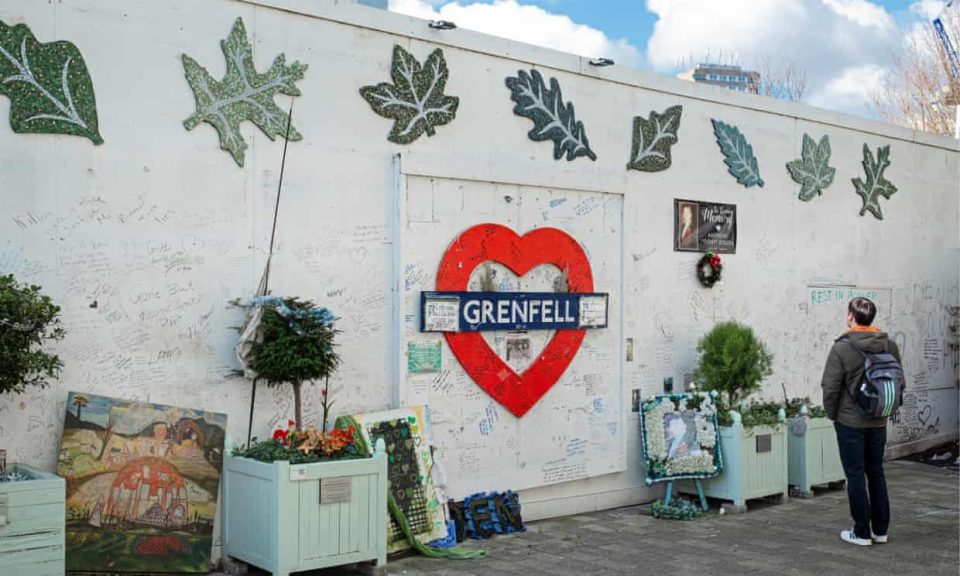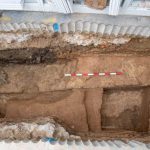For seven years, Grenfell Tower has been enveloped in a protective white covering, shielding the fire-scarred structure from further deterioration while preventing loose debris from posing a danger to the public. This façade conceals a stark memorial, a poignant symbol of the disaster that resulted in 72 fatalities and disrupted countless lives. Recently, the deputy prime minister announced that the tower will be torn down in time for the fire’s tenth anniversary in 2027, citing its structural instability as well as a lack of united support from community groups advocating for justice.
Numerous organizations have expressed feelings of being sidelined by the government’s choice, while nearby residents appear to be at odds with one another. It is evident that a decision imposed from above has overshadowed the thoughtful discussions and significant involvement of various local communities. As focus shifts toward creating a lasting memorial, concerns arise about whether this process will be approached with the necessary care and appropriate community engagement.
Initial indications suggest that systemic changes have not truly materialized in light of the government’s determination. The decisions surrounding the Grenfell memorial will carry significant weight, serving as a reflection of how the construction industry and relevant regulations have evolved since the tragedy, addressing aspects like planning, design, and ongoing upkeep.
Ideally, if genuine progress has been achieved, these processes should be dramatically transformed: planning that prioritizes community input; procurement focused on quality with transparent and accountable agreements; prioritization of health, safety, accessibility, and sustainability; engagement with local skills to bolster the local economy; and, as advocated by the Grenfell Tower Memorial Commission – a prompt transition of ownership from the government to an appropriate independent entity. The government has pledged to support this if it aligns with the community’s desires and will establish an organization for its stewardship.
Designing memorials and monuments is inherently complex, as the ongoing debate about the site, structure, and function of the UK’s national Holocaust memorial illustrates. The postwar anti-monumentalism movement rejected grandiose memorials that echoed the grandstanding favored by authoritarian regimes. In London, this departure from ostentation is evident in the fourth plinth commissions, as well as in more understated and poignant locations like Altab Ali park in Whitechapel, which commemorates the racist murder of a young Bangladeshi worker in 1978 with a simple decorative arch.
Creating monuments for everyday communities elevated by tragedy is both rare and challenging. However, we can draw inspiration from history. Take, for instance, George Frederic Watts’s Memorial to Heroic Self-Sacrifice in Postman’s Park, which features beautifully crafted ceramic tablets honoring ordinary individuals who selflessly gave their lives to save others. More than fifty years later, the London County Council paid tribute to those who perished during the blitz by planting an avenue of mature trees between the old County Hall and Waterloo Bridge on the South Bank.
Ruins and remnants also carry their own significance. The medieval Coventry Cathedral, severely damaged during WWII, had its remaining structure preserved as a memorial garden, adjacent to a striking new cathedral designed by Basil Spence.
The Grenfell Tower Memorial Commission, supported by the Ministry of Housing, Communities and Local Government, has initiated the commissioning process by shortlisting a diverse array of design teams. Whomever is selected for this significant responsibility will face a challenging task with numerous long-term implications.
While the hope is for the memorial to be a permanent fixture, it should also be able to adapt over time. The significance and cultural legacy of Grenfell will inevitably evolve in unforeseen ways. Unlike the Victorian era’s inclination for solid, unchanging monuments, contemporary society requires memorials that reflect the diverse perspectives and needs of the community and the public. The Monument in the City of London commemorates the Great Fire of 1666, yet its messages regarding the event’s causes and the power dynamics involved in the city’s reconstruction have become largely obscure with time.
Moreover, even with plans for the tower’s demolition, it is vital to retain certain elements of it. When the iconic brutalist housing estate Robin Hood Gardens was demolished, the V&A Museum faced the challenge of preserving a three-storey section. A similar approach could be taken with Grenfell, now including appropriate exhibits and interpretations. Forensic Architecture has not only documented the tower’s structure and the technical failures surrounding it but has also gathered “situated testimonies” in collaboration with residents, families affected, and survivors.
The memorial presents an opportunity to acknowledge the significant changes Grenfell has induced and will continue to inspire regarding how our cities and buildings are designed. Scholars like Liam Ross from Edinburgh have undertaken extensive studies on “pyrotechnic cities,” focusing on how fire incidents have shaped urban environments and led to regulatory changes, including in North Kensington. Ross studies the process of “concretising existing codes in new structures.” A genuine memorialization of disaster requires updates to safety standards. Over the past three years, Ross and I have collaborated on a concise educational program intended to equip professionals with enhanced knowledge of fire safety, conceived as both a tribute and a platform for reform.
Numerous existing memorials to Grenfell have been initiated by those most affected by the fire and who are actively campaigning. They remind us that memorialization is not merely a passive or singular process. Even if the tower were to stay standing, its symbolism would hinge upon substantial transformations in our approach to buildings and urban design. A memorial ought not to be a “national” monument for mere observation; instead, it should serve as a focal point reflecting a collective and renewed commitment to prevent such tragedies from occurring again.
Neal Shasore is a historian specializing in the built environment and an advocate for heritage preservation.
**Do you wish to express your views on the topics mentioned in this article? If you would like to submit a response of up to 300 words for consideration in our letters section, please click here to email us.**


